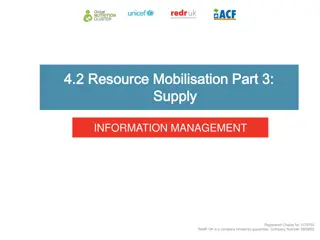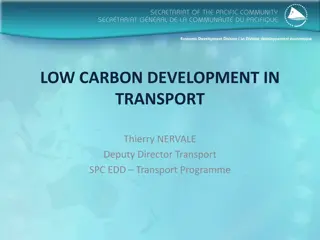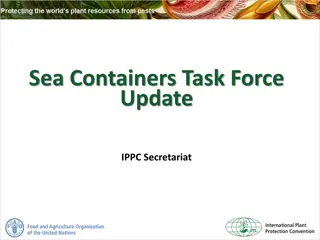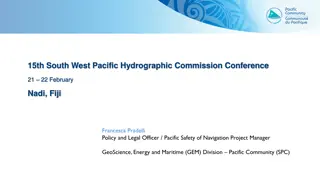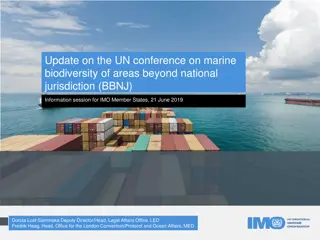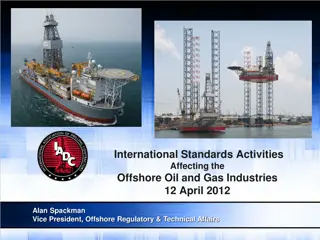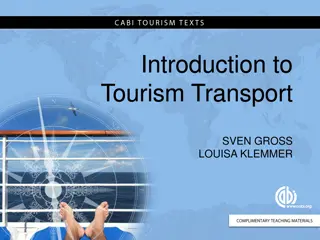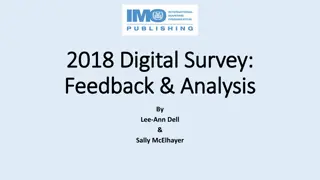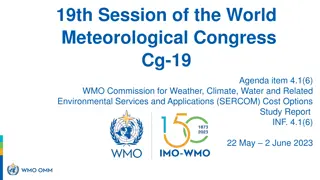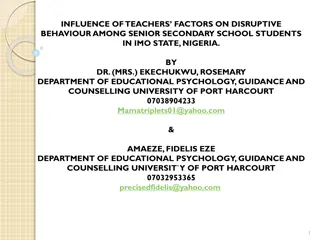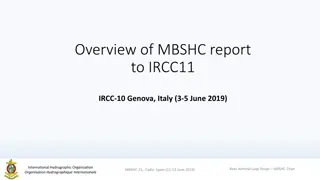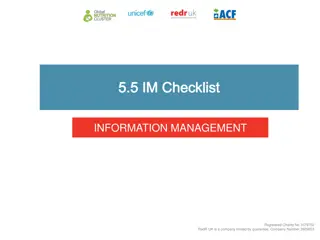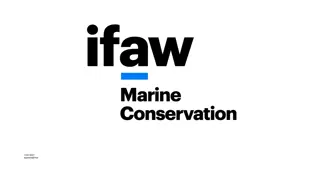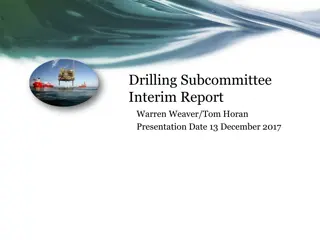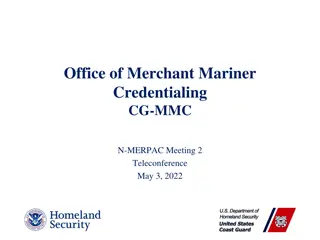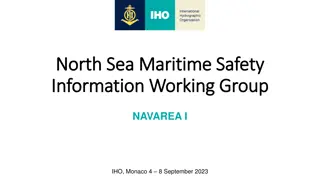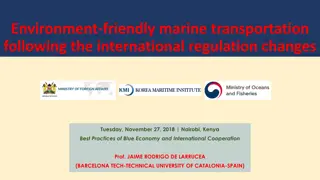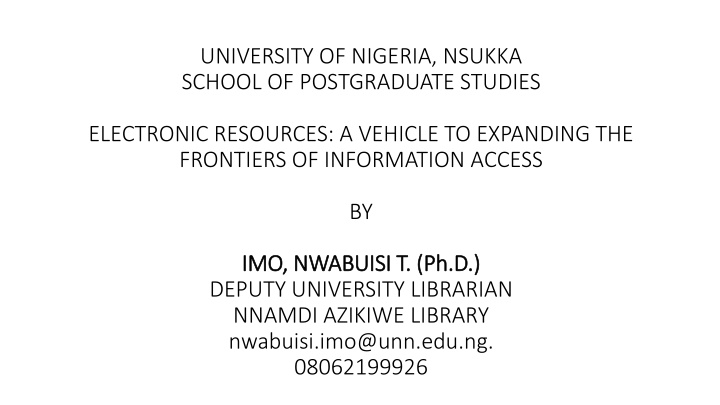
Expanding Information Access Through Knowledge Acquisition at University of Nigeria, Nsukka
Explore the dynamics of knowledge acquisition and information access in academic settings, as outlined in a presentation by Dr. Imo Nwabuisi at the University of Nigeria, Nsukka School of Postgraduate Studies. Discover the significance of repositories of knowledge, various sources of information, and the role of Information & Communication Technologies (ICT) in knowledge acquisition.
Download Presentation

Please find below an Image/Link to download the presentation.
The content on the website is provided AS IS for your information and personal use only. It may not be sold, licensed, or shared on other websites without obtaining consent from the author. If you encounter any issues during the download, it is possible that the publisher has removed the file from their server.
You are allowed to download the files provided on this website for personal or commercial use, subject to the condition that they are used lawfully. All files are the property of their respective owners.
The content on the website is provided AS IS for your information and personal use only. It may not be sold, licensed, or shared on other websites without obtaining consent from the author.
E N D
Presentation Transcript
UNIVERSITY OF NIGERIA, NSUKKA SCHOOL OF POSTGRADUATE STUDIES ELECTRONIC RESOURCES: A VEHICLE TO EXPANDING THE FRONTIERS OF INFORMATION ACCESS BY IMO, NWABUISI T. (Ph.D.) IMO, NWABUISI T. (Ph.D.) DEPUTY UNIVERSITY LIBRARIAN NNAMDI AZIKIWE LIBRARY nwabuisi.imo@unn.edu.ng. 08062199926
LECTURE OUTLINE KNOWLEDGE Definitions Why do people seek for knowledge? How do people acquire knowledge? Frame of knowledge Learning and knowledge acquisition REPOSITORIES OF KNOWLEDGE Libraries Information centres Documentation centres SOURCES OF INFORMATION Primary Sources Secondary Sources Tertiary Sources ACCESS TO INFORMATION Databases INFORMATION & COMMUNICATION TECHNOLOGIES Definitions Hard & Software Technologies Web Search Web 2.0 Technologies CONCLUSIONS
GOALS AND OBJECTIVES OF THE PRESENTATION At the end of this presentation we would have: Raised our consciousness about knowledge and its acquisition Understood the essence and importance of a repository of knowledge Understood the various sources of information for research in knowledge construction Understood the techniques of taping into these sources to make good contribution to knowledge Understood what ICT is and its role in knowledge acquisition
KNOWLEDGE Definition: The condition of being instructed or having information acquired by erudition and research, which results in one getting acquainted with ascertained truths, facts or principles (Oxford English Dictionary). Why do people seek for knowledge? Man is a cosmic orphan wanting to understand the structure and properties of the cosmos which he finds himself. This in essence presents problems seeking for solution. To find solution he has need for information Acquisition of enough information that resolves a problem presents knowledge. How do people acquire knowledge? Spinoza distinguished three methods through which man acquires knowledge to resolve his problems Opinions or imagination (This depends on ideas formed by the memory and imaginations. It is an uncritical experience). Reasoning and inferring the essence of one thing from another (Deductions). Intuition (The power to know how somethings happen or will happen without reasoning)
KNOWLEDGE (Continued) Frame of Knowledge: While the first and third means of knowledge acquisition could be said to be subjective the second is objective. To construct knowledge through this process, students and their lecturers are required to do a thorough retrospective search of literature to identify as many published or unpublished sources in the area of interest. To put the above into perspective we may need to examine Sir Karl Poppers worlds of objective knowledge (see figure 1). He recognized three worlds viz: the physical world, the mental world and the world of objective knowledge.
Knowledge Gate Keeping Operating between Sub-sets V and VII are very important group of individuals known in Knowledge circles as gate keepers whose functions include: To determine the rules of the game Setting standards of practice Determine what knowledge or information that should be allowed to get to the public domain for consumption. They invariably determine who becomes what in the Knowledge society. This group of knowledge experts form the learned societies or organizations in knowledge areas that regulate the activities in those specialisations.
ASSIGNMENT ONE Participants are expected to find two learned Societies or organisations in their discipline. Outline some of the activities of these societies or organisations Find out the journals and other scholarly publications of the societies Find out the conferences, workshops, seminars etc. organized by the societies Assignment should submitted to thomas.imo@unn.edu.ng.
Learning and Knowledge Acquisition Learning is a process of acquiring knowledge. It is a multifaceted reality defined by the context (UNESCO, 2015). Learning is anchored on four pillars (UNESCO, 2015): Learning to know A broad general knowledge with the opportunity to work in-dept on a small number of subject. Learning to do To acquire not only occupational skills but also the competence to deal with many situations and to work in teams. Learning to be To develop one s personality and to be able to act with growing autonomy, judgment, and personal responsibility. Learning to live together Developing an understanding of other people and appreciation of interdependence. Education is a means of learning that is deliberate, intentional, purposeful, and organized. Education should be aimed at developing in the student competencies to understand events happening around him and creating in him the critical consciousness to initiate and carry out projects for the service of our common humanity.
Learning and Knowledge Acquisition (Contd.) Education process can be grouped into three: Early childhood education:- This starts from cr che to grade six. It is an early intervention learning which is essential for their well being. Secondary education:- Emphasis is (entrepreneurial education). This is particularly important in this era of growing youth unemployment. Higher education:- This could be any formal education received after secondary education. It may include those from diploma and degree awarding institutions. However, University education is the most popular among higher education learning. Universities are centers of brainstorming activities among lecturers (teachers) and students. They represent the pinnacle of knowledge acquisition, hence they are referred to as citadel of knowledge. A good university education demands that a graduate inculcate the ability to use library resources to locate, select, access and evaluate information for answering research questions. placed on developing vocational skills
REPOSITORIES OF KNOWLEDGE World three in figure 1 is the world of objective knowledge. Here the totality of products of human thought as recorded in languages, the arts, the sciences and other artifacts are processed and stored for reference as the need arises. The repositories of products of human thought are known as libraries, information centres or documentation centres. The main objective of these centres is to systematically acquire, process, store and retrieve these knowledge products on demand. Libraries, especially national and university libraries, are supposed to provide access to information any where it is stored in the globe. They rely on their understanding of their local environment and their relationship with community leaders, local partners, library users to develop a picture of community needs and provide the types of services that will best support knowledge acquisition.
ACCESS THROUGH KNOWLEDGE SURROGATES Knowledge surrogates are access points created by librarians for library users to make use of acquired information resources without much difficulty. They are done through compiling catalogues, reading lists, abstracting, indexing and other bibliographic services that allows users identify and retrieve essential information. There are electronic versions of these surrogates These surrogates often provide secondary and tertiary information sources which makes access to the primary sources easy. Libraries through union catalogues provide access to information in other libraries and specialized information centres, publishing outfits, database creators etc. Being aware that every subject has its literature, libraries make effort to ensure that all shades of subjects are covered while subscribing for resources or collaborating with database producing organisations.
INFORMATION SOURCES IN DATABASES A database is a structured collection of related data (Stepp, M., Miller, J. & Kirst, V., nd.) Each database generally covers one subject or groups of related subjects. Databases can be grouped into four classes: Institutional databases {Repositories of research results from institutions} National databases {These are centrally coordinated facilities for scientific publications in various institutions in a country} Regional databases {These are pools of databases from various countries that make up the block referred to as region.} Non-Governmental Organisations and international agencies databases {These are pools of databases which are built by NGOs and commercial publishing outfits. They are usually on subscription.} In the ICT era databases have become sources of current information for research that it deserve detailed study. It may be pertinent to examine a few of them.
Table I: International Agency Databases (Subscription) DATABASES OWNERSHIP DATE LAUNCHED ACCESS TO INFOR ACCESSIBILITY RANGE SUBJECT COVERAGE HINARI (Access to Research Programme) WHO, Yale University Lib. & up to 150 Publishers 2002 14,900 J, 60,000 e- books, 105 other infor. resources Accessible in over 115 Countries Biomedical & health literature AGORA (Access to Global Online Research in Agriculture) FAO & Major Publishers No Information 13,700 J. 26,500 e- books Accessible in over 115 Countries Food, Agriculture, Environmental Science. OARE (Online Access to Research in the Environment) UNEP, Yale University Library & up to 60 publishers 2006 11,500 J, 27,000 e- books & 40 other Infor. resources Environmental Scs. Natural Scs., Engineering etc. ARDI (Access to Research for Development & Innovation) World Intellectual Property Organisation & Pub. 2009 7,600 J, 22,000 e- books & 25 other Infor. sources Science & Technology GOALI (Global Online Access to Legal Information) ILO, Yale Law School, & Cornell Law School Library. 2018 Legal Education
Table II: International Agency Databases (IP Based) DATABASES OWNERSHIP DATE LAUNCHED ACCESS TO INFOR ACCESSIBILITY RANGE SUBJECT COVERAGE JSTOR (Journal Storage) Ithaka Harbors 1995 2,000 J, E-Books, & Primary sources Subscription 75 Disciplines TEEAL (The Essential Electronic Agricultural Library) Cornell University Library 1999 400 J Subscription Agriculture INASP (Int. Network for the Availability of Scientific Publication) Int. Council for Science, & Cornell University Library 1992 No Information Subscription Scientific Publications
Table III: International Agency Databases (OA) DATABASES OWNERSHIP DATE LAUNCHED ACCESS TO INFOR ACCESSIBILITY RANGE SUBJECT COVERAGE DOAB (Directory of Open Access Books) No Information No Information 12,955 e-Books 128 Countries All Disciplines DOAJ (Directory of Open Access Journals) Maintained by Infrastructure Services for Open Access. No Information 12,167 J 128 Countries All Disciplines PubMed Cetral National Center for Biotechnology Information No Information 4,000 J No Information Biomedical & Life Sciences Globethics.net No Information No Information No Information Individuals Applied Ethics Excluded from access to Lit. in applied Ethics GOAP (Global Open Access Portal) Governments of Colombia, Denmark, & USA No Information Open Access Journals 158 Countries No Information
Table IV: NGOs/Commercial Databases (Subscription) DATABASES OWNERSHIP DATE LAUNCHED ACCESS TO INFOR ACCESSIBILITY RANGE SUBJECT COVERAGE Science Direct Elsevier 1997 3,500 J, 34,000 e- books. On demand, through their Web site Science & Medicine Nature Publishing Group Springer Nature No Information 13,700 J. 26,500 e- books On demand, through their Web site Science & Medicine Edward Elgar Publishing Edward Elgar 1986 No Information On demand, through their Web site Social Sciences & Law. Scopus Elsevier 2004 34,346 J, & other Infor. sources On demand, through their Web site Life Sciences, Social Sciences, Physical Sciences & Health Sciences
ASSIGNMENT TWO Participants are expected to use the open access data bases (preferably DOAJ and DOAB) to find and download: Three Journal Titles that will be relevant to their project or thesis topic Six Journal articles that will be relevant in writing the background of the topic Six Current e-books that will be relevant in writing the background of the topic Assignment should submitted to thomas.imo@unn.edu.ng.
INFORMATION & COMMUNICATION TECHNOLOGIES (ICT) Information and Communication Technologies (ICT) is a term that encompasses all forms of technology used to create, store, exchange and use information in its various forms (Ochai, 2007) Information and Communication Technologies (ICT) is the electronic tools or technological resources that are used to gather, process, store, preserve, access, retrieve and disseminate information (Edom, 2010) Information and Communication Technologies (ICT) is a microelectronics based combination of computing, telecommunication and video techniques providing the capacity for acquisition, processing, storing and retrieving of vocal, pictorial, textual and numerical information (Longley & Shain, 1989). Advances in ICT applications in information processing have made access and dissemination of information easier irrespective of location. Access to information in ICT era is indifferent to its location. What is actually needed is the skill to operate and ownership of the technologies required for the access.
ICT Continued Developments in ICT have made a number of things possible in education: A world in which people interact with colleagues around the globe, exchange information, messages and coordinate activities through a variety of technological and communication means. A world whose information and communication needs are solved through the internet (the World Wide Web), a library through which people meet their information needs. This has made cooperation and collaboration an imperative and a global reality. To the Librarianship profession it has created the phenomenon of library without boarders, which is driven on the wheels of the world wide web. All individual libraries in the world only serves as nodes or portals through which information is fed or retrieved. To Information generators and user it has made possible the phenomenon of information society where everyone can create, access, utilize and share information and knowledge (e.g. Web 2.0 technology).
CONCLUSION We have been able to examine knowledge and its acquisition. It was noted that knowledge is acquired through learning which inheres in the individual the ability to know, to do, to be and to live together. Learning is done through education which is aimed at developing the students competence to understand events happening around him. For this to be effective students must previous research on the topic in question. Libraries and other repositories of knowledge is the domain of these previous knowledge which are stored after surrogates have been provided for access. It is imperative for students to be oriented on how to have access to stored knowledge products in the library through any of the surrogates of knowledge. Databases and the types available for researchers were discussed. It was noted that databases have become important sources of current electronic information. Lastly we examined ICT and its relevance in expanding access to electronic information.

